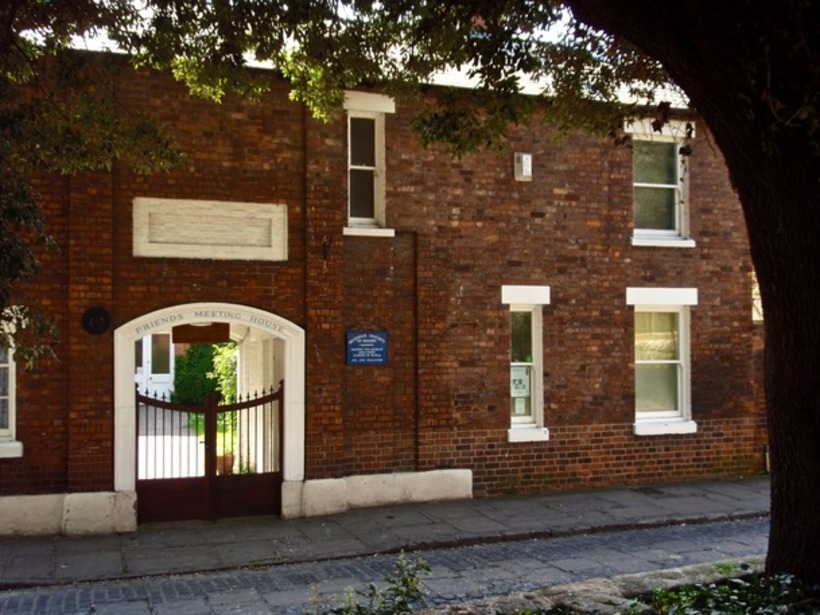Gloucester: Managing our meeting house
Gloucester Meeting House was built in 1830. It is a large grade II building that has undergone several alterations. It has a lodge, which was used by the warden, and a burial ground attached to the site. In recent years Gloucester meeting found itself facing challenges common to many meetings. As a small meeting it had to take bold steps.

Gloucester Meeting has a small number of active members and attenders. There was a great burden on this group of Friends to fulfil the roles of the meeting. Three Friends from other meetings had taken on roles to do with the running and maintaining of the meeting house. Looking after this meeting house became a priority for trustees. The situation was unsustainable, so the trustees took action.
Trustees have a responsibility to ensure that area meeting buildings are maintained. The buildings must enhance meeting for worship and support local meetings. Trustees are also responsible for employing staff, if needed.
Gloucestershire Area Meeting invited ideas to address the challenges at Gloucester. It received replies from individual Friends and attenders as well as from meetings.
A sub-group of trustees was formed to work on options for the way forward. Over many months the group researched different options for managing the buildings, finances and employment. It consulted Britain Yearly Meeting staff from the Recording Clerk's Office and Quaker Life to look at options.
Throughout this process the sub-group carefully considered five main things:
- the needs of Gloucester Meeting as a worshipping community
- a continued Quaker presence in the town
- use of the meeting house by local community groups
- the burden on Friends and those in other local meetings
- the financial cost of services and maintenance of the property
At the end of this process the trustees had four options.
Their preferred option was to employ a management company. A company of surveyors would act as agents to both let and manage the premises. The lodge could be let out to provide income. This option meant that Friends would no longer be under stress to arrange maintenance and upkeep. The company would be in a clear contract and trustees would have oversight.
This option would result in the warden and cleaner no longer being employed by the meeting. Both these posts became redundant. It was therefore extremely important that trustees sought advice from specialist employment lawyers at an early stage to inform their decision making.
Trustees found managing the redundancy very difficult. Once the preferred option was agreed by trustees, confidentiality prevented them from sharing that conclusion with Gloucester Meeting and area meeting. It was difficult to reconcile this confidentiality with the Quaker business method of openness and transparency. However the trustees' advisors were very clear. Employment law required that the trustees consult with the warden and cleaner before sharing the information with Gloucester Friends and area meeting.
Following the statutory process of meeting with them, both the warden and cleaner were made redundant.
The managing agents have been appointed. They will manage all bookings for the meeting house. The lodge is let as private housing. The income raised will contribute to the costs of the agents. The agreement will be reviewed every year to make sure it fits the meeting's needs.
Managing a meeting house is a huge undertaking and needs careful consideration. Discernment, conversation, and inclusive discussion are all crucial first steps on this path. Friends in Gloucester explored many avenues to help them realise their journey.
If your meeting wants to begin this journey here are some useful sources of information:
- general property resources are available in the Property advice pages
- Property advice sheets (PDF:1.6mb)
- Sign up to the Property Advice e-group (offsite link)
- Quaker faith & practice has guidance about meeting houses: Chapter 14: Stewardship of our material resources (14.24-14.30)
- more maintenance advice on the Safer Places of Worship website
Meeting for clearness has helped many Friends find direction, or clarified questions that need to be asked. There is guidance about meetings for clearness at Quaker faith & practice12.24 and is explained in some depth in the Clearness leaflet (PDF).
If you would like to know more about the specific project undertaken in Gloucester, please contact Nik Dadson (nikolasd@quaker.org.uk). He can put you in touch with the relevant Friends.